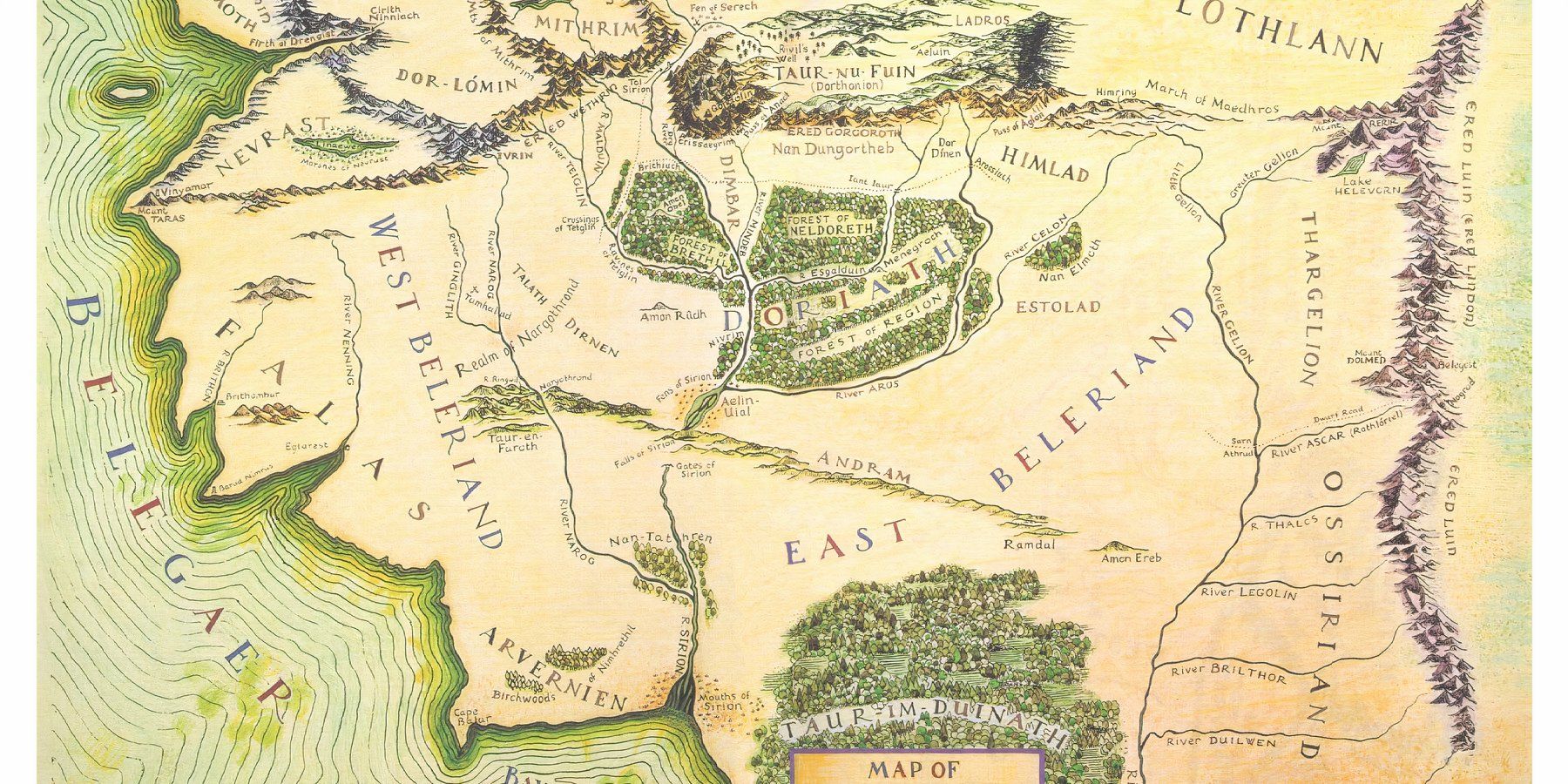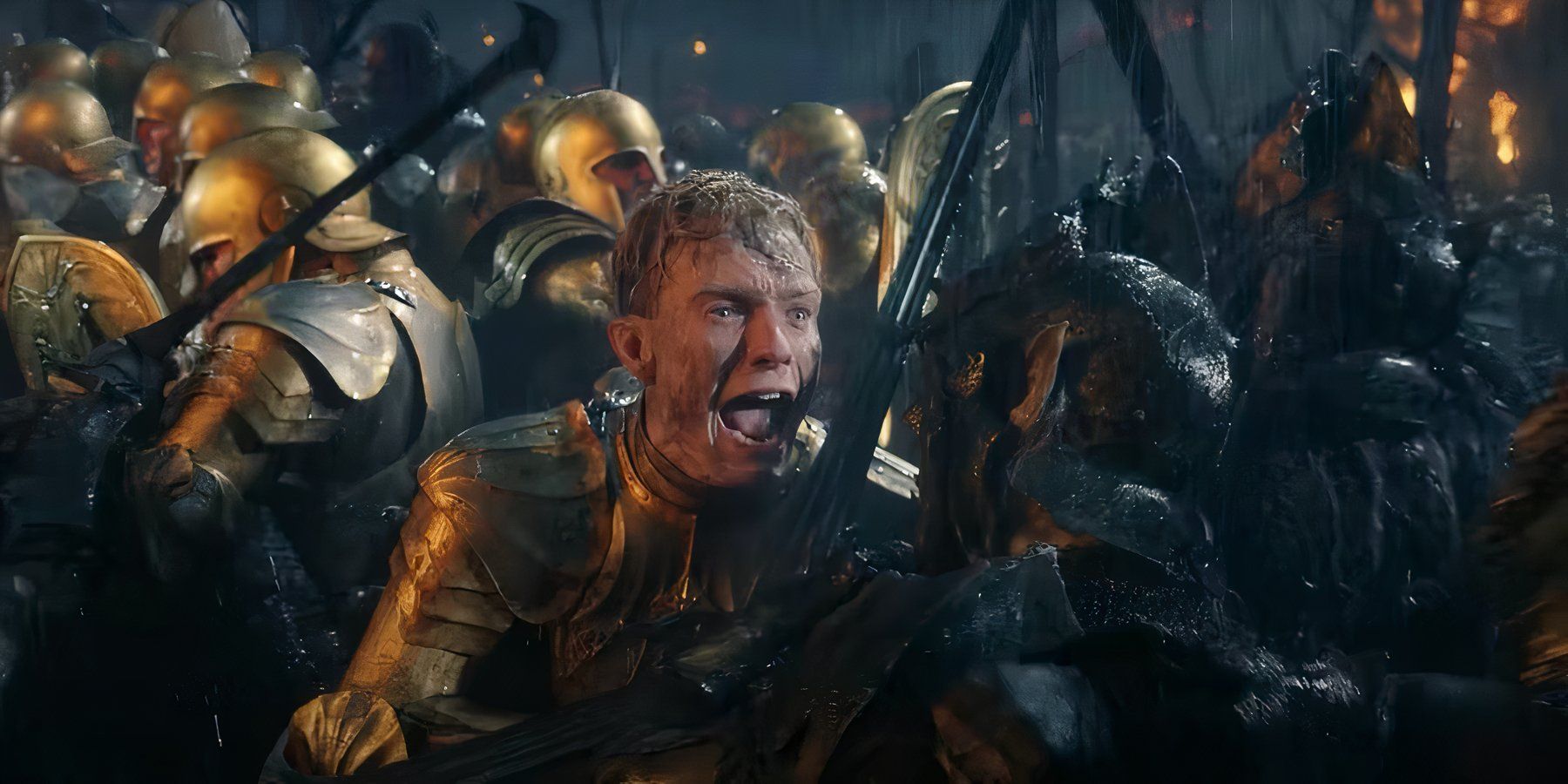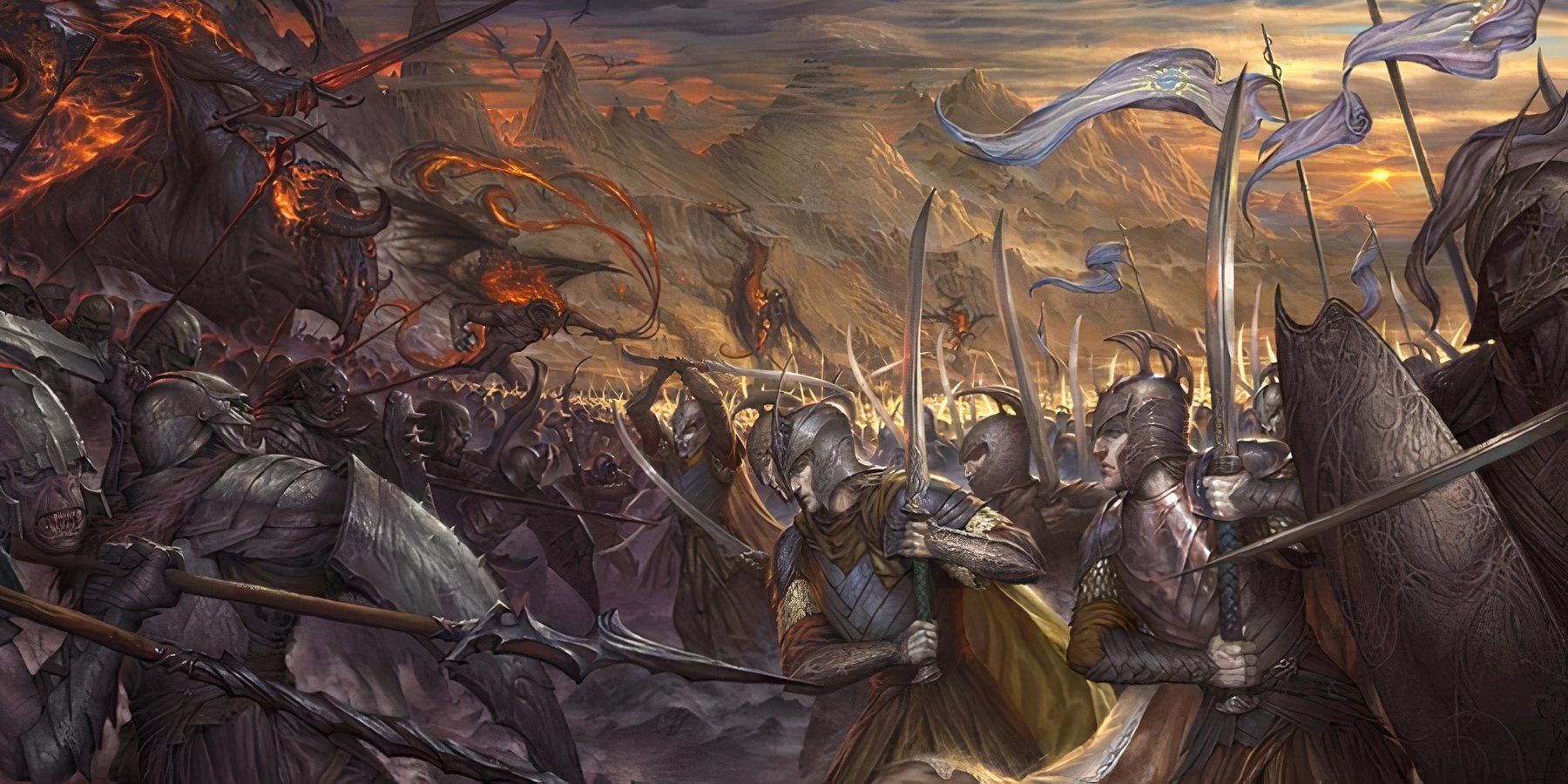The fictional geography of Middle-Earth has always been the foundation of J.R.R. Tolkien's world-building. The map was drawn by the author himself and included within every copy of The Lord of the Rings. It is an iconic piece of imagery for the series, and has appeared in both Peter Jackson's films and Amazon's The Rings of Power. In the deeper mythology, however, there was once an entire region that existed far before The Lord of the Rings. That region is known as Beleriand.
Beleriand is the name given to the large swath of land west of the Blue Mountains, and it is the setting for almost all the most important events of the First Age. By the time of The Lord of the Rings, however, Beleriand has been lost for more than six thousand years. The region was home to some of the greatest kingdoms in Middle-Earth, but the wars waged against Morgoth destroyed Beleriand and sank its landmass into the sea. Luckily, the history of this land is well-preserved in The Silmarillion, and its tales are beloved by fans of Tolkien's mythology.
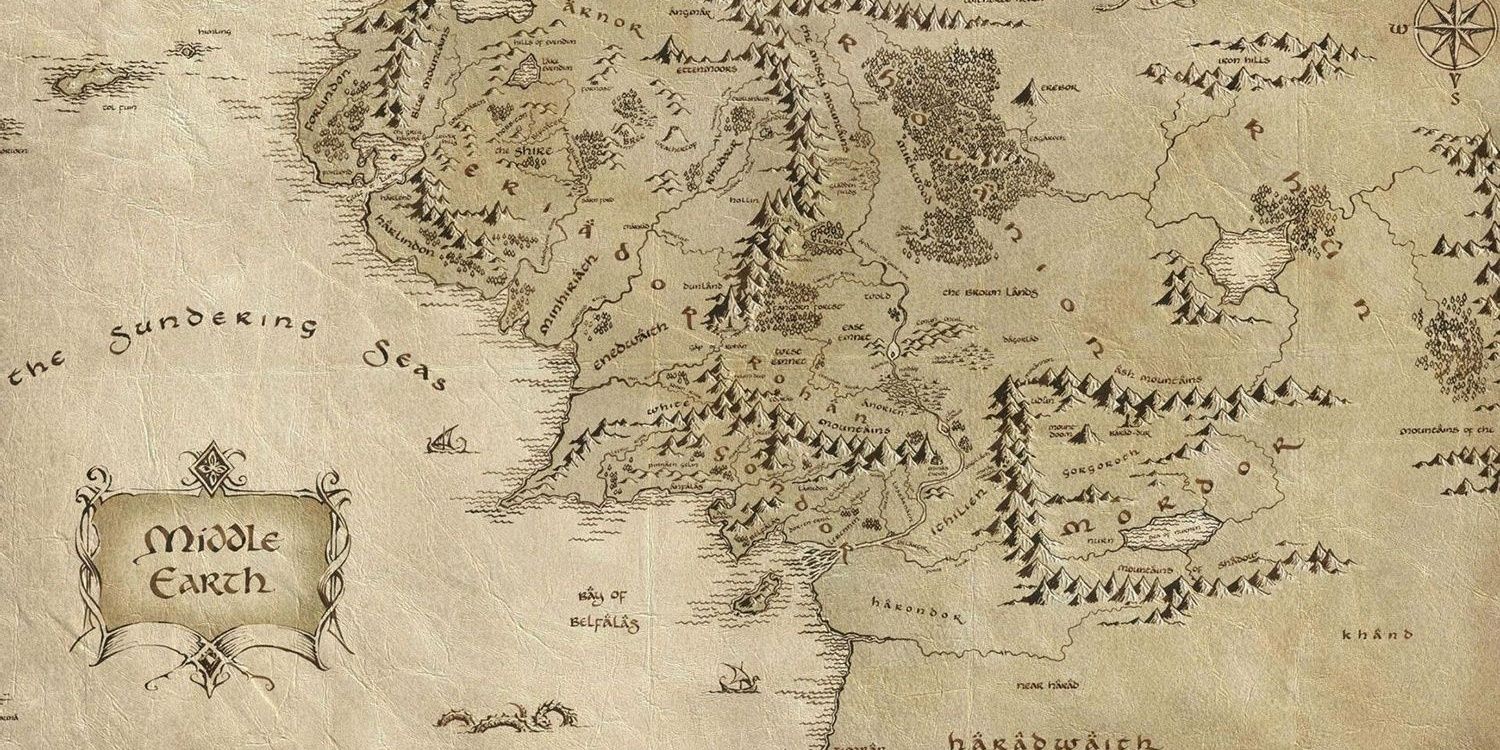
LOTR: What Is The Difference Between Middle Earth, Arda, And Beleriand?
The various places and history of Tolkien's work can be confusing, so here's a breakdown of how these terms make up the world of Lord of the Rings.
The Geography of Beleriand
Beleriand is in the far west of Middle-Earth. Its western borders form the coast of the Belegaer Sea, and its eastern borders lie in the Blue Mountains. To the region's south lie the Great Gulf and the Bay of Balar, and to the north were the regions of Hithlum, Lothlann, and Dorthonion. In an unpublished manuscript, Tolkien once estimated that Beleriand was roughly 550 miles wide.
Beleriand was home to several important kingdoms, including those of the Noldor and Sindar Elves. In central Beleriand was the kingdom of Doriath, which was ruled by Thingol and Melian and contained the great city of Menegroth. Also in central Beleriand, hidden by the Encircling Mountains, was the Elven city of Gondolin, ruled by Turgon. To the west was the Elven kingdom of Falas, ruled by Círdan the Ship-Wright. While the north was initially home to many great kingdoms of Elves, the evil of Morgoth soon laid waste to the region, transforming it into a realm of shadow. Here, among the Iron Mountains, he built the dark fortress of Angband and raised three volcanoes, known as Thangorodrim.
To the far east was a region known as Ossiriand. After the destruction of Beleriand, Ossiriand and its lands were the only ones not lost to the sea. Here, the Elven king Gil-galad founded the realm of Lindon, which would become a great capital for the Elves during the Second Age. Lindon appears in Amazon's The Rings of Power, but by the Third Age, Lindon had been largely depopulated and was known as the Grey Havens. This is the location from which Frodo, Gandalf, and Bilbo depart at the end of The Lord of the Rings. It is ruled by Círdan, who migrated there after losing Falas to Morgoth.
The War of the Jewels
In the Years of the Trees, the great Elven smith Fëanor forged the three Silmarils. These jewels were imbued with the light of the Two Trees of Valinor, and held power over all who beheld them. Morgoth coveted the jewels, and hated the Elves and the Valar. In an attack, he destroyed the Two Trees, killed Fëanor's father, and took the Silmarils for himself. Enraged, Fëanor rallied his kin among the Noldor, and together they swore to take back the Silmarils, no matter the cost.
The Noldor prepated to pursue Morgoth back into Middle-Earth, but the Valar warned them that this decision would forever exile them and their kin from returning to Valinor. This doom was further sealed when the Noldor slew their own kind in order to steal ships for their journey to Middle-Earth. As Fëanor and his followers sailed in search of Morgoth and the Great Jewels, they were cursed by the Doom of Mandos. By this curse, all actions taken by the House of Fëanor in pursuit of the Silmarils would forever result in disaster.
Once the Noldor arrived in Middle-Earth, they found their Sindar kindred under attack from Morgoth and his dark forces. The Noldor, still strong with the light of Valinor, beat back Morgoth's early armies and defended their brethren. Thus, the War of Beleriand began, and the coming battles would bring about the death of countless Elves. The Noldor won many great victories against Morgoth, but forever they remained cursed under the Doom of Mandos. Because of this, they never achieved true victory over the Dark Lord, and the Elves of Middle-Earth were often distrustful and spiteful towards one another.
Among the many battles for Beleriand, five are named in The Silmarillion as being of special importance. The third of these is the Dagor Aglareb, or Glorious Battle. This was a great victory for the Elves, who besieged Morgoth in his fortress for more than 400 years. Unfortunately, this battle was followed by the dreadful Dagor Bragollach, or Battle of Sudden Flame, in which Morgoth scorched the north of Beleriand and killed Fingolfin, the High-King of the Noldor.
Seventeen years later, Maedhros, the eldest son of Fëanor, gathered a large host of armies to march against Morgoth. However, this plan was thwarted by spies within the Noldor's midst, and Morgoth learned of their attack. Thus, the Nirnaeth Arnoediad, or Battle of Unnumbered Tears, resulted in another terrible loss for the Elves. Morgoth's powers continued to grow, and he even laid waste to the hidden city of Gondolin after learning of its location.
The Fall of Beleriand
After nearly six hundred years of bloodshed and warfare between the Elves and Morgoth, the time came for the greatest battle that both sides had endured. Morgoth now held lordship over most of Beleriand, and the Doom of Mandos continued to divide and bring about violence between the Noldor. As a last hope, Eärendil, the father of Elrond, embarked on a voyage to Valinor to beg for the Valar's assistance against Morgoth. Although the Valar had sworn to leave the Noldor to their fate, Manwë was moved by Eärendil's plea. Thus, the Valar went to war against Morgoth, alongside a host of the Eldar that had remained in the Blessed Realm.
The War of Wrath had begun, a conflict that would last 40 long years. It was said to be the greatest battle ever fought in Middle-Earth. The destruction therein was so great that it sundered the Blue Mountains, causing a flood from the Sea of Rhûn that covered most of Beleriand in water. Both the allied free peoples and Morgoth's Orcs suffered great casualties from the cataclysmic event, and the face of Middle-Earth was forever altered. Eventually, the War of Wrath came to an end. Morgoth was captured and thrust into the Void, and the Valar returned to Valinor. Beleriand was destroyed, and the fate of the world now lay in the lands to the East, where the events of The Lord of the Rings would unfold.
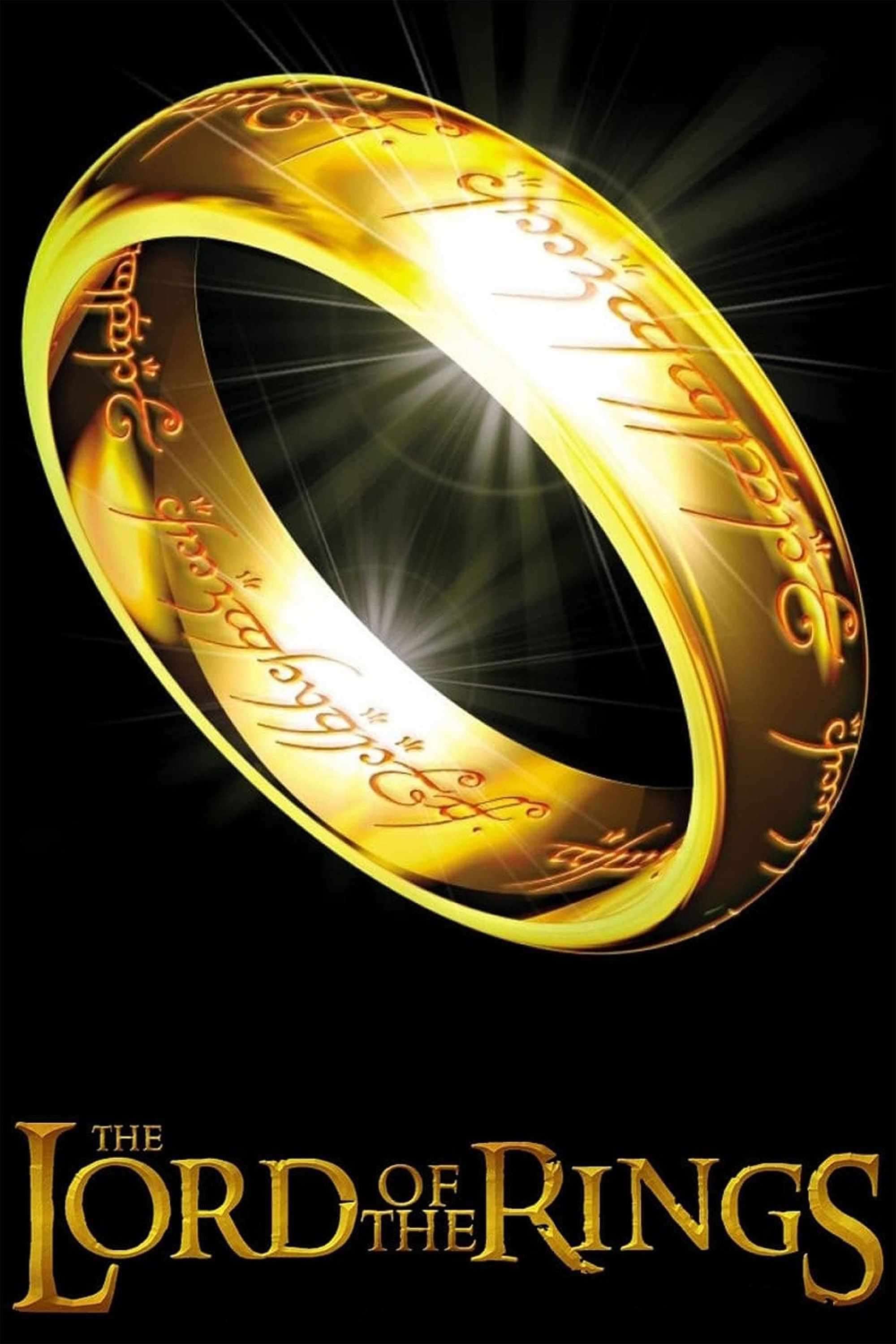
The Lord of the Rings
- Created by
- J. R. R. Tolkien
- Current Series
- The Lord of the Rings: The Rings of Power
- Where to watch
- HBO Max



